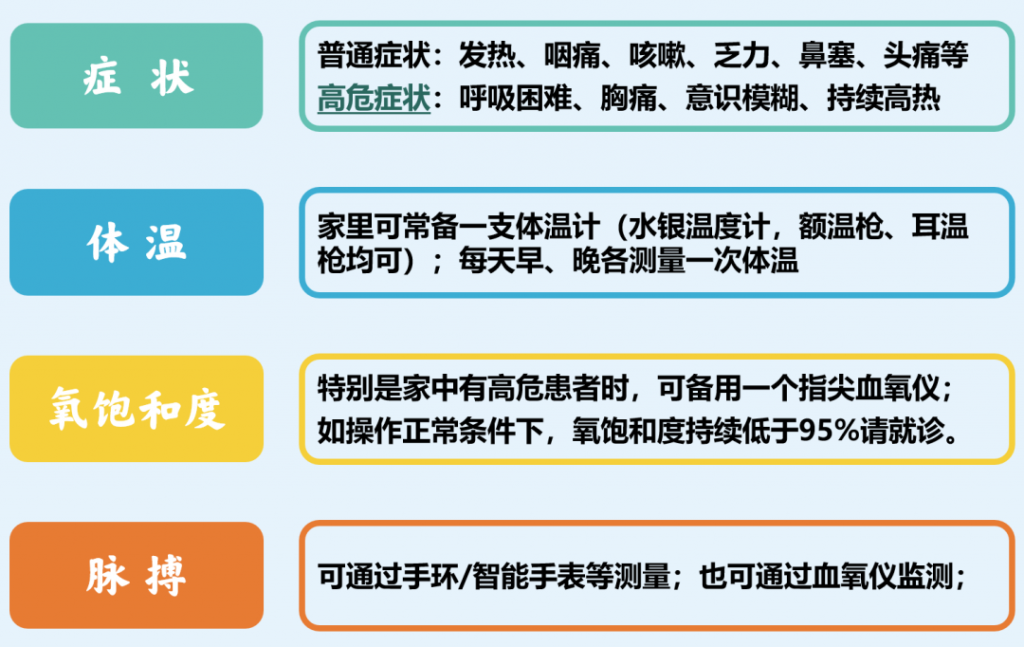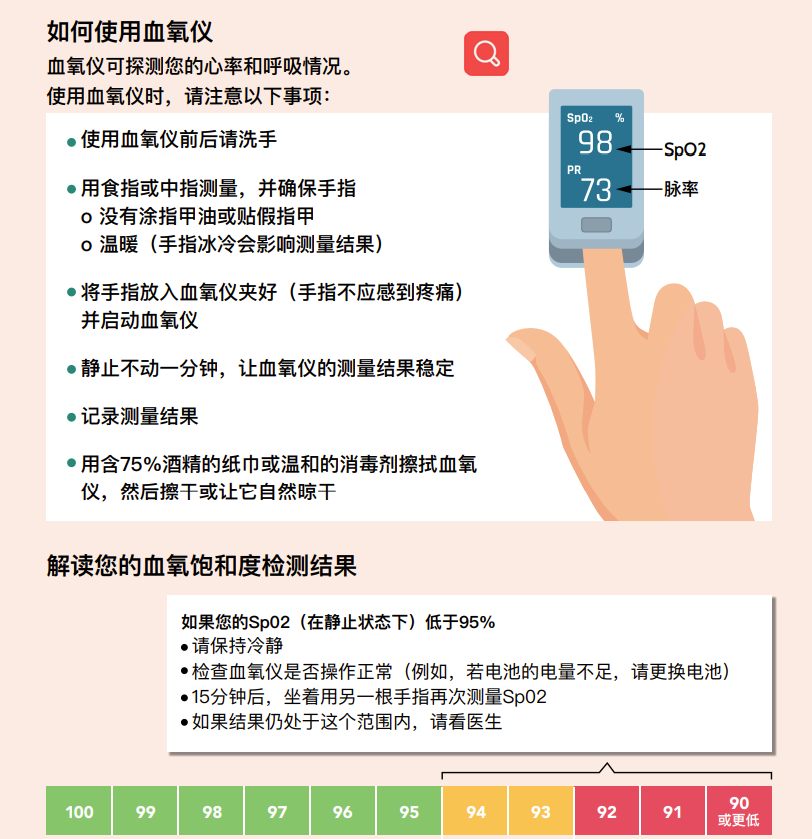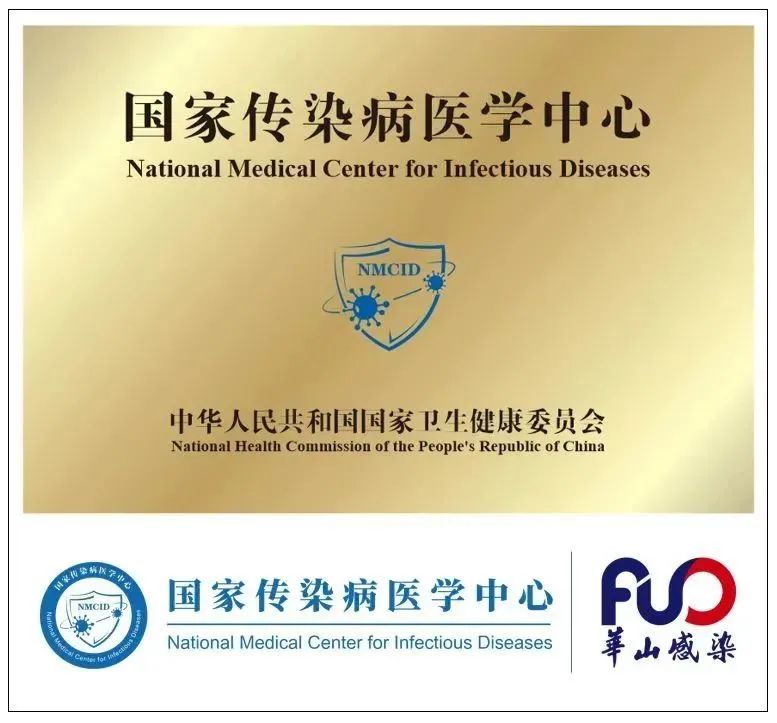Original link: https://codechina.org/2022/12/xinguan/
- 01 Common symptoms of new crown Omicron infection
- 02 How to judge whether I am suitable for home rehabilitation?
- 03 How to judge whether I belong to the high-risk group?
- 04 What indicators do I need to monitor?
- 05 What range does the index exceed and need to go to the emergency department or fever clinic of the hospital?
- 06 What should I do if there is no above-mentioned alarm signal, but the underlying disease is not well controlled?
- 07 For common symptoms such as fever, sore throat, and cough, can I take medicine by myself to relieve them?
- 08 What items can be prepared in a small household medicine box?
The original text comes from the official account of Zhang Wenhong’s team, Huashan Infection, link:
https://mp.weixin.qq.com/s/FNnr7flf8fxmdyWVCaGh9w
The promulgation of the “New Ten Measures” to fight against the new crown yesterday is worth commemorating. China’s fight against the epidemic has entered a new era of comprehensive counterattack against the virus. However, the anti-epidemic gestures across the country, the perception of hospitals and the public, and the government’s response all need further coordination. Coordination will inevitably be messy, and the public will also feel a little uneasy about the uncertainty.
It can be predicted that as life gradually normalizes, we will face a huge possibility of encountering the new crown virus unexpectedly. In the past three years, we have been reluctant to contact the new crown. Just like the domestication of animals by humans, with the passage of time, a new type of microorganism called the new coronavirus has appeared in the human world. In fact, there are thousands of similar microorganisms in human society. Inadvertently, every year we will be infected with several of them for a short period of time. Sometimes you have already been infected without even knowing it. However, some people have very low immunity, and every time they get sick, they will be very serious and even life-threatening. . But this is the real world, and it may take months for us to get used to it.
There are tens of thousands of plans to deal with the new crown, but the core question is only one. Should I go to the hospital when I am sick? Around this problem, it is very simple. 99.5% of people may not need to go to the hospital. The family doctor in the community health service center or the doctor in the fever clinic of the hospital can solve the problem through telephone, Internet or face-to-face consultation. However, our medical system must ensure that 0.5% of patients should be admitted to the hospital. All we have to do today is that the common people know that they should not go to the hospital casually if they get the new crown, and they can recover quickly at home, but they must have a doctor, preferably a family doctor around them, a doctor familiar with the community service center, who can give guidance, and the Internet Hospital couriers or community volunteers can deliver the bought medicines to patients in need of treatment in a timely manner. Patients who need to be hospitalized can be transferred to the red-coded hospital or the red-coded ward after treatment by our community grassroots doctors or doctors in the fever clinic of the hospital to receive efficient treatment. As long as this system is functioning normally and there are sufficient drug reserves, we can gradually get out of the epidemic and welcome a better and splendid life after several months of running-in.
Therefore, both the public and the government only need to focus on one thing, which is how to provide beds for 0.5% of people who need to be hospitalized, so that 99.5% of infected people can be treated at home with peace of mind. However, people often ask: “I understand the truth, but I still don’t know what to do?” So, today’s Huashan Home Guide for COVID-19 Infection is quickly put away!
01 Common symptoms of new crown Omicron infection
After being infected with the new crown Omicron, many people have no symptoms or relatively mild symptoms, but some people still have some “flu-like symptoms”, including fever, cough, sore throat, runny nose, nasal congestion, muscle aches, Headache etc.
02 How to judge whether I am suitable for home rehabilitation?
If you are an asymptomatic infection or a mild case without serious underlying diseases, and your family environment is suitable for self-isolation, you can completely self-isolate and observe your health at home, wait until the symptoms disappear, and test for nucleic acid according to relevant regulations. The transfer can resume daily work and life. However, if you belong to a high-risk group, you need to be more cautious.
03 How to judge whether I belong to the high-risk group?
On December 7, the country formulated risk assessment standards for residents with different basic diseases and vaccination status. Among them, people who need to meet two conditions at the same time can be classified as low-risk groups: ① less than 80 years old; ② no underlying disease, or stable underlying disease and full vaccination.

Common serious underlying diseases include patients with renal insufficiency who are undergoing dialysis, immunocompromised patients who have been using immunosuppressants for a long time and those who have undergone organ transplantation, and patients whose tumors are undergoing radiotherapy, chemotherapy or immunotherapy.
If you do not belong to the low-risk group and are accompanied by symptoms such as high fever, you should go to the hospital for further evaluation by a doctor.
04 What indicators do I need to monitor?
For infected people who choose to isolate and recover at home, while ensuring that they can eat well and rest well, they also need to learn to monitor the following indicators by themselves: symptoms, body temperature, pulse, and oxygen saturation.

05 What range does the index exceed and need to go to the emergency department or fever clinic of the hospital?
When you have a fever, your pulse (heart rate) tends to increase, and you don’t need to be too nervous. However, if there is persistent high fever (greater than 39 degrees) or rapid pulse (heart rate) increase (more than 100 beats/min) for more than 3 days; or oxygen saturation drops below 95%, you should go to the hospital in time.
If fever is accompanied by obvious dyspnea, unrelieved chest pain, or even confusion, you need to go to the hospital in time.
06 What should I do if there is no above-mentioned alarm signal, but the underlying disease is not well controlled?
Some people with chronic diseases (such as diabetes and high blood pressure) do not have the above-mentioned symptoms, but if their blood sugar and blood pressure are not well controlled, it is recommended to use the Internet hospital or consult with a specialist doctor first. If the relevant resources cannot be obtained or the symptoms continue to worsen, you should go to the hospital in time to see a doctor at the clinic for positive infection patients.
07 For common symptoms such as fever, sore throat, and cough, can I take medicine by myself to relieve them?
For young people without underlying diseases, these symptoms usually recover on their own within 3-5 days after adequate rest and enhanced nutrition. If the above symptoms are obvious, you can take medicine to relieve them. For example, you can take antipyretics for fever, and some cough syrup for cough, but you should take the dosage according to the instructions, and do not exceed the reasonable dosage range. You can also choose to take some Chinese patent medicine preparations to help relieve symptoms under the guidance of a doctor.
08 What items can be prepared in a small household medicine box?
① Thermometer: Electronic ear thermometer, forehead thermometer, or mercury thermometer are all fine. Among them, the mercury thermometer is fragile. If it breaks, it may cause mercury poisoning. Therefore, it needs to be used with care, and it is not suitable for residents with poor self-care ability.
②Finger-clip pulse oximeter: A general finger-clip pulse oximeter will display two parameters after it is clamped on the finger: SpO2% is what we call oxygen saturation, generally above 95, there is no need to worry; PR bpm means Pulse, the normal pulse value of an adult is displayed at 60-100. However, when the body temperature rises by 1°C, the pulse rate will generally increase by 10-20 beats per minute. Therefore, it is normal for the heart rate or pulse to increase during fever. But if you experience obvious palpitations or arrhythmia (irregular heartbeat or pulse), you need to go to the hospital.

③Electronic sphygmomanometer, mercury sphygmomanometer: Compared with traditional mercury sphygmomanometers, electronic sphygmomanometers are more convenient and safer to use. The normal blood pressure range of adults is about 90-140mmHg systolic pressure (upper pressure) and 60-60mm diastolic blood pressure. About 90mmHg. For patients with underlying diseases, they can usually monitor their daily blood pressure range. If they seriously deviate from their basic blood pressure level, they should see a doctor in time.
④ Antipyretics, cold medicines, cough medicines, and expectorants: It should be noted that these medicines cannot treat the new crown, but may relieve the symptoms caused by the new crown. It can be purchased in moderation based on personal experience of previous colds, but there is no need to hoard.
Although most of these drugs are over-the-counter (OTC), improper use may also cause certain side effects. For example, the most common adverse reaction of NSAIDS (non-steroidal anti-inflammatory drugs) is liver and kidney damage. Therefore, it is recommended to read the instructions carefully when applying, especially for special groups such as those with underlying diseases, pregnant women, and children, and consult a doctor before taking the medicine.
In short, after the new coronavirus evolved into the Omicron mutant strain, it showed relatively mild pathogenicity compared with the previous virus. Most of the infected people were asymptomatic or mildly symptomatic. Most of the infected people passed home isolation and self-health monitoring. All can recover in a relatively short period of time without having to go to the hospital. Even so, there will still be very few people who will be seriously ill or even life-threatening. Therefore, in case of infection with the new crown, it is particularly important to learn how to judge whether you need to go to the hospital.
Everyone should be the first person responsible for their own health!

Text: Wang Xinyu, Zhou Hao, Li Yang, Ruan Qiaoling, Professor Zhang Wenhong Reviewer: Professor Zhang Wenhong
Image source: Singapore Home Rehabilitation Guide https://ift.tt/Iq7MvD3
This article is transferred from: https://codechina.org/2022/12/xinguan/
This site is only for collection, and the copyright belongs to the original author.